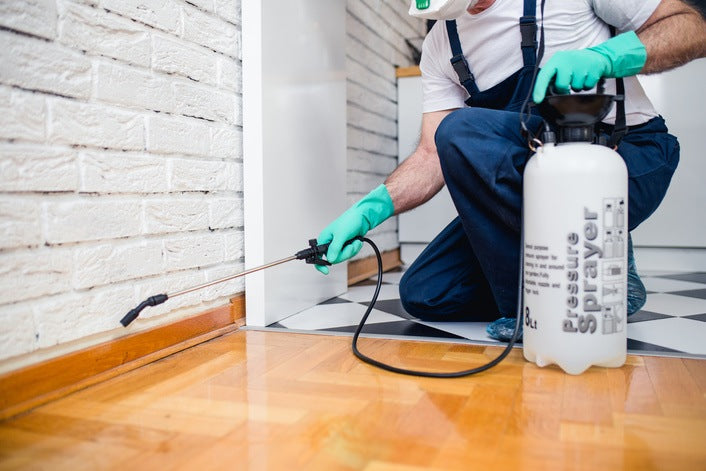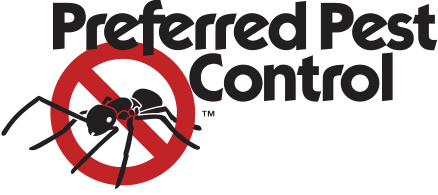Natural Pest Control Homestead Options for Sustainable Living
Wiki Article
Usual Parasites and Treatments: A Comprehensive Guide to Pest Control
Households often encounter challenges from usual bugs like cockroaches, rodents, and ants. These problems can interrupt day-to-day live and position health dangers. Early discovery is vital, usually noted by indicators such as droppings or gnaw marks. Comprehending reliable treatment choices and avoidance strategies can guard homes. When expert aid might be required, this overview discovers these aspects and gives insight right into. What steps can home owners require to secure their rooms efficiently?Determining Common Home Pests
Exactly how can one successfully recognize typical household parasites? The preliminary action entails observing the environment for indications of insect activity. Typical household bugs include ants, roaches, crawlers, and rats. Each species exhibits distinctive qualities. Ants are usually seen in trails, while cockroaches choose dark, wet locations. Spiders can be recognized by their internet and one-of-a-kind body forms. Rats, such as mice and rats, leave droppings and munch marks.Additionally, recognizing parasite actions is important. Some bugs are nighttime, making nighttime examinations essential. Familiarity with their preferred habitats aids in recognition; termites, for instance, are usually discovered near timber resources. Acknowledging these characteristics can assist in quicker recognition and proper administration. Consequently, an eager eye and understanding of typical bugs' looks and behaviors are essential for efficiently recognizing family invaders.
Indicators of Invasion
The presence of pests in a home frequently reveals itself via different indications of infestation. Property owners may notice droppings, which can differ in size and shape depending on the pest species. Furthermore, gnaw marks on wood or food packaging suggest rodent activity, while tiny openings in walls or furnishings might suggest the existence of pests such as termites. Uncommon sounds, like scraping or buzzing, typically signify an infestation hidden within ceilings or wall surfaces.One more indicator is the presence of nests or internet, which can be found in corners or concealed rooms. Unexplained damages to plants or food things may also indicate pest task. Moreover, unpleasant odors can emerge from rotting pests or their waste. Identifying these indications early is vital for reliable insect control, as timely treatment can avoid more damage and reduce wellness threats connected with problems.
Avoidance Methods
Once indications of problem are determined, executing reliable prevention techniques comes to be important to safeguarding a home versus future pest issues. Homeowners need to first concentrate on keeping sanitation, as food particles and mess bring in parasites. Frequently sweeping, vacuuming, and properly keeping food can substantially minimize the likelihood of invasions.Additionally, securing fractures and holes in doors, walls, and windows assists avoid insects from getting in. Mounting displays on home windows and vents offers one more barrier against unwanted trespassers. Correct drain and getting rid of standing water get rid of breeding grounds for insects.
Landscaping methods also play a crucial role; maintaining shrubs cut and keeping a clear border between plant life and the home can prevent bugs. Educating family members about these practices ensures a cumulative effort in prevention, making it much much more tough for insects to obtain a grip within the home.
Efficient Treatment Alternatives
Addressing an infestation requires a strategic approach to assure efficient treatment options are used. Numerous techniques exist, tailored to certain insect types and the severity of the problem. Chemical treatments, such as rodenticides and pesticides, are widely used for their immediate impact. These compounds ought to be used very carefully, respecting safety and security guidelines to shield pet dogs and human beings.Biological controls, consisting of all-natural predators and parasites, use an eco-friendly alternative, minimizing chemical reliance. Pest Control Homestead. Integrated Insect Administration (IPM) integrates numerous methods, highlighting prevention and surveillance alongside treatment, which enhances long-term effectiveness
Physical obstacles, like catches and exclusion techniques, offer non-toxic options for taking care of pests, particularly rodents and bugs. In instances of severe problems, professional parasite control services might be required, making use of sophisticated techniques and experience to eradicate pests effectively. Each treatment choice need to be evaluated for its performance, safety, and environmental influence to ensure a well balanced strategy to pest administration.
DIY Parasite Control Approaches
In the domain name of pest control, DIY techniques can use effective alternatives to industrial treatments. All-natural solutions and homemade catches or lures give eco pleasant alternatives for managing insect problems. These methods not only lower dependence on chemicals yet also encourage individuals to take control of their space.
Natural Solutions for Parasites
How can home owners efficiently fight insects without considering severe chemicals? All-natural solutions offer a sustainable choice for insect monitoring. Vital oils, such as pepper mint and tea tree, can deter pests when diluted and sprayed around the home. Diatomaceous earth, a fine powder made from fossilized algae, can be sprayed in areas where pests are common, causing dehydration in bugs that come right into contact with it. Vinegar solutions act as efficient cleansers that additionally push back ants and spiders. Additionally, planting pest-repellent natural herbs like basil and lavender can develop an all-natural barrier versus undesirable bugs. By making use of these all-natural methods, homeowners can preserve a pest-free environment while minimizing their exposure to unsafe chemicals.Homemade Traps and Baits
For house owners looking for additional means to take care of insects without chemicals, homemade traps and baits present a reliable remedy. These DIY approaches utilize common household things, making them both cost-effective and environmentally friendly. As an example, a straightforward fruit fly trap can be produced making use of a container loaded with apple cider vinegar and covered with cling wrap, penetrated with small openings. This draws in and catches the flies, minimizing their populace. A combination of borax and sugar serves as an efficient lure for ants, luring them in while the borax interrupts their digestive systems. Homemade traps can target different insects, including rodents, bugs, and also bigger critters, supplying home owners with a useful choice to industrial pest control items.When to Call an Expert
Establishing the appropriate moment to call an expert for parasite control can be tough. House owners frequently attempt to handle parasite concerns independently, yet certain situations call for professional treatment. If the problem is comprehensive or has actually lingered regardless of DIY efforts, it is a good idea to look for expert help. In addition, specific bugs, such as termites or bedbugs, call for customized treatments that are best handled by experienced professionals.
Those doing not have the time or competence to efficiently address the situation must think about getting experts. Recognizing these indicators can help with effective and timely insect administration, guaranteeing a secure and comfortable living environment.
Frequently Asked Inquiries
Exactly How Can I Inform if My Pest Issue Is Severe?
To establish if a parasite issue is severe, one should observe the regularity of discoveries, visible damages to residential property, indications of invasion, and the existence of nests or droppings, showing a bigger, recurring problem.Are There Any Natural Solutions for Parasite Control?
All-natural treatments for pest control include utilizing important oils, diatomaceous planet, vinegar, and soapy water - Pest Control Homestead. These options can deter or eliminate bugs without hazardous chemicals, appealing to those looking for eco-friendly choices for taking care of invasionsHow Do I Safely Throw Away Dead Pests?
To securely dispose of dead bugs, one should put on handwear covers, place the body in a sealed bag, and discard it in the trash. Some may pick to hide it at a safe range from living locations.Can Pests Affect My Animals' Health?
Yes, pests can adversely influence pet dogs' wellness. Problems may cause conditions, bloodsuckers, and allergic responses, possibly causing discomfort or serious disease. Pest Control Homestead. Regular preventative measures and veterinary examinations are vital for keeping family pets' wellness versus bugsWhat Is the Cost of Professional Parasite Control Solutions?
Professional bug control services typically vary from $100 to $300 per check out, depending on variables like the sort of insect, extent of invasion, and area. Continuous maintenance strategies might sustain extra costs over time.
The visibility of bugs in a home typically reveals itself via different indicators of invasion. When signs of invasion are determined, implementing reliable avoidance methods ends up being crucial to guarding a home against future bug troubles. Different methods exist, customized to particular insect kinds and the intensity of the infestation. In situations of severe infestations, expert pest control services may be required, using advanced strategies and proficiency to remove insects successfully. Professional bug control services commonly range from $100 to $300 per see, depending on factors like the type of pest, extent of invasion, and place.
Report this wiki page